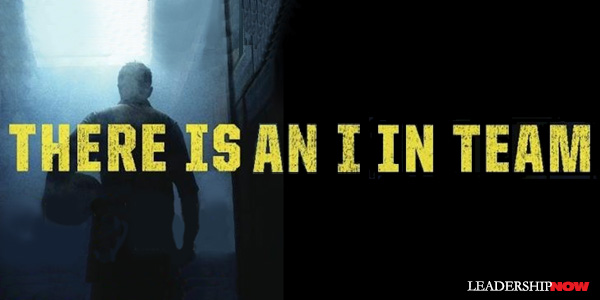 |
 |
08.28.12

There is an I in Team
THE often repeated phrase, “There’s no ‘I’ in TEAM” is only half true. It ignores the fact that great teams have great individual members. And high performing teams are not always easy places to be. Mark de Rond acknowledges in There Is an I in Team, that “with few exceptions, the qualities that make individuals as gifted as they are can make them wearisome as team members.” Great team members are often perfectionists, paranoid, stubborn and/or self-confident. But they do perform. “Team leadership is as much about mitigating the risks of these traits as it is about exploiting their potential.” David Whitaker, one of Britain’s most distinguished coaches wrote in The Spirit of Teams, “If you want an exceptional team, keep your eye on the individual … Teams thrive on individual choice and commitment … the most powerful teams are made up of individuals who have chosen to work as a team.” Using fresh examples, de Rond tackles other realities of teams: On high performance teams, everyone is not equal. Star performers increase a team’s overall effectiveness but only to a point. If the proportion of stars versus average members exceeds much beyond about 50%, you begin to experience diminishing returns. Of course, emotional intelligence plays a part. De Rond reports that “if someone is strongly disliked, it is almost irrelevant whether or not he is competent. By contrast, if someone is liked, her colleagues will seek out every bit of competence she has to offer, meaning that a little likeability has far more mileage than competence in making someone a desirable team member.” Without internal competition, teams may underperform. Too much harmony can hurt team performance. “A healthy level of internal competition can help get the best out of high performers.” Citing Timothy Gallwey, De Rond explains, “each player tries his hardest to defeat the other, yet not for the sake of beating another player, but merely to overcome the obstacle he now presents.” Interestingly, one study de Rond offers, finds that often team members value charitable individuals much less than we might expect. After a team activity, members were asked which people they would eliminate. Not surprisingly, the selfish people were unpopular, but so were the most selfless. One explanation was that “seeing others take less than their fair share made them feel bad, and that the only way to rescue their own reputations was to eliminate the martyr. Virtue had become a vice.” While we want everyone to be on the same page, people have different versions of reality. Whether or not they are correct is less relevant than what their realities tell you about their priorities. “At the root of much team conflict is disagreement on why things are as they are and not otherwise, which too easily escalates as colleagues begin to question each other’s motives. To recognize explanations for what they are—a visceral reminder of what matters to people personally—is often a good first step to calming the waters.” De Rond also deals with social loafing or why productivity tumbles with size. An interesting series of studies show that productivity and team size is less an issue of coordination and more a problem of contribution. Team members are “more likely to optimize their performance when faced with slightly fewer members than the task at hand requires.” Management consultant Kal Bishop found that with creative teams in particular, larger teams were inclined to seek consensus rather than explore novel ideas. Understanding and managing our humanity is key to leading teams. De Rond concludes: “Team leaders may choose to increase their reliance on sophisticated technological gadgets to up performance but will only ever be effective when they use these tools to unlock that basic, shared humanity. And, then, not by dispensing solutions, but by knowing what questions to ask and when.”

Posted by Michael McKinney at 10:22 AM
|
BUILD YOUR KNOWLEDGE


How to Do Your Start-Up Right STRAIGHT TALK FOR START-UPS 
Grow Your Leadership Skills NEW AND UPCOMING LEADERSHIP BOOKS 
Leadership Minute BITE-SIZE CONCEPTS YOU CAN CHEW ON 
Classic Leadership Books BOOKS TO READ BEFORE YOU LEAD |